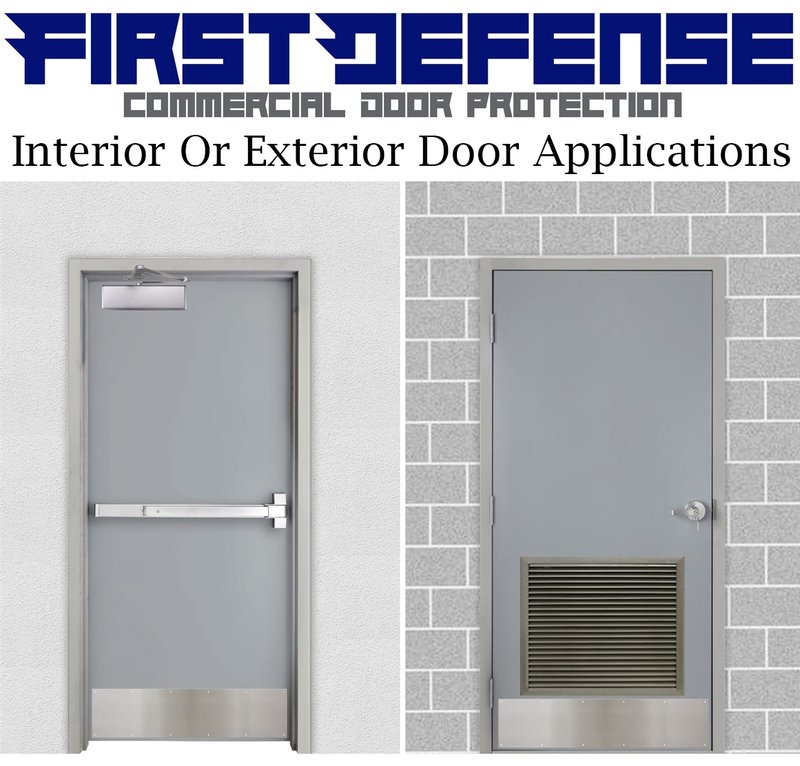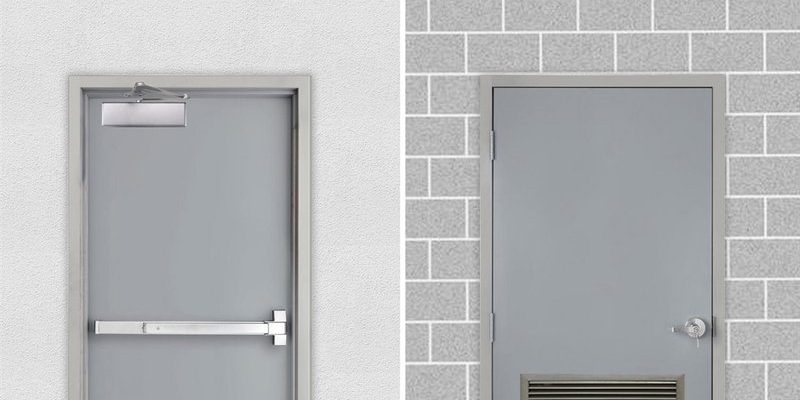
Picture the kick plate as armor for your door. It takes all the bumps, scuffs, and shoe kicks so the rest of the door stays sharp. Aluminum clad doors are popular because they blend weatherproof durability with a sleek look, but their kick plates can loosen over time. Sometimes it’s just old screws, sometimes the aluminum skin flexes a bit, or maybe that moving truck last month gave it a little too much love.
If you’ve never tackled a door repair before—especially on something like a Therma-Tru, Jeld-Wen, or Pella aluminum clad unit—don’t worry. This isn’t a complicated job. You’ll just need a few simple tools, a little patience, and the right steps. Let’s break down exactly how to get that kick plate tight and secure again.
Why Kick Plates Matter On Aluminum Clad Doors
Kick plates do more than just look shiny at the bottom of your door. They act as a first line of defense against scuffs, dents, and moisture. On an aluminum clad exterior door, which is basically a wood or composite core wrapped in a weather-resistant aluminum skin, a kick plate isn’t just decoration—it’s *insurance* for your door’s most vulnerable spot.
Here’s the thing: when the kick plate comes loose, it opens the door (literally) to all kinds of trouble. Dirt, water, and even bugs can sneak into the gap, eventually leading to rot or damage to the underlying structure. Plus, every time the plate rattles, it gradually wears away at both the aluminum and the fasteners, making the problem worse. It’s a little like driving on a loose tire—one bump, and suddenly you’ve got a bigger issue.
Aluminum clad doors are built to last, but only if every piece does its job. Kick plates take the brunt of daily abuse, and when they’re loose, they can even get caught on shoes, or make the door harder to close. That’s why fixing a loose kick plate isn’t just about appearances—it’s about protecting your investment and keeping the door working right.
Common Reasons Why Kick Plates Become Loose
If you’re staring at a wobbly kick plate, your first thought might be, “Did I do something wrong?” Honestly, most of the time, this is just a normal part of wear and tear—especially on busy entryways. Over time, the constant opening, closing, and sometimes even slamming of the door vibrates the screws loose. Changing seasons can also play a part. Metals expand and contract in hot or cold weather, which slowly works fasteners free.
There’s another sneaky culprit: improper installation. Sometimes the original installer used the wrong type of screws (maybe too short, or not compatible with aluminum), or skipped a few necessary fasteners along the edges. If you live somewhere with wild weather, wind or rain can sneak behind the plate and make things worse, especially if the caulk or seal around the plate has failed.
Finally, on older doors, corrosion can weaken the screws or the kick plate itself. If you see white residue or rusty patches around the fasteners, the hardware may have oxidized. In some cases, the screw holes can strip out—meaning the screws just spin and won’t grip. Knowing the cause will help you choose the right fix and avoid repeating the problem.
Tools and Materials You’ll Need
Let me explain exactly what you’ll want to have before you start. Nothing’s worse than getting halfway through a repair, only to realize you’re missing that one crucial tool. To fix a loose kick plate on an aluminum clad exterior door, gather the following:
- Phillips and flat-head screwdrivers (sometimes both types are used, depending on the screws)
- Power drill or driver (for stubborn or stripped screws)
- Replacement screws (preferably stainless steel,
- Adhesive or double-sided exterior tape (optional, for extra hold or if holes are stripped)
- Silicone caulk (for sealing edges if needed)
- Utility knife or small pry bar (if you need to remove the kick plate)
- Measuring tape and pencil (to line up holes or check alignment)
Side tip: If you’re dealing with a brand-specific door, like a Pella or Jeld-Wen, check if their manual or website lists recommended screw types or installation tips. Some aluminum clad door models may have hidden fasteners or specific instructions.
Step-By-Step Instructions To Tighten Or Reinstall A Loose Kick Plate
Here’s how you can get your kick plate back in business. Take it slow; even if you’ve never fixed anything on a door before, these steps will walk you through.
- Inspect the Kick Plate and Screws
Open the door and check the kick plate from both inside and outside. Are screws missing, loose, or stripped? Is the kick plate bent or separated from the door? Use a screwdriver to see if the screws will tighten up easily. If they just spin or don’t grip, the holes may be stripped out. - Remove the Kick Plate (if needed)
If most or all screws are loose or if you see damage behind the plate, carefully remove it. Use your screwdriver, and if it’s stuck, gently pry it off with a utility knife. Watch for sharp edges—aluminum can slice! - Repair or Reinforce Screw Holes
If holes are stripped, you can fill them with wood glue and toothpicks (for wood cores), or use a plastic wall anchor. If the door’s aluminum skin is thin, adhesive tape might help keep the plate snug. Make sure all holes are ready for at least one new, tight screw. - Reinstall or Tighten Screws Properly
Align the kick plate so it sits level and straight. Start each screw by hand, then finish with a screwdriver or drill. Don’t over-tighten—just snug enough to hold. If you want extra insurance, run a bead of silicone caulk along the top edge to seal out moisture.
Take your time: A rushed job can bend the kick plate or strip the new screws. It’s better to go slow and get a lasting fix.
Tips For Keeping The Kick Plate Secure Over Time
Once you’ve got everything tight, you might be wondering, “Will I have to do this again soon?” Honestly, if you use the right method and screws, your kick plate should stay put for a long while—sometimes years. Here are some extra steps to make sure your repair lasts:
- Use stainless steel or coated screws to prevent rust and corrosion over time.
- Seal the edges with a bead of caulk (especially the top edge) to keep out water. Just don’t overdo it; you’ll want to remove it easily if repairs are needed later.
- Avoid slamming the door, especially in windy weather. Repeated impact is the number one kick plate killer.
- Check every few months for signs of loosening. Catching a wobbly screw early means a quick, easy fix.
If you want an extra layer of security, a thin strip of double-sided exterior-grade tape behind the kick plate helps absorb shock and keeps things from rattling, especially on thin aluminum skins.
When To Replace Versus Repair The Kick Plate
There are times when tightening up a loose kick plate just won’t cut it. If the plate is deeply dented, cracked, or heavily rusted, repair methods won’t last. Aluminum clad doors are tough, but if the kick plate has become warped or the fasteners have pulled through the metal, replacement is probably your best bet.
How can you tell? Look for edges that won’t sit flush, holes that are too enlarged for screws to grip, or significant visible corrosion. You might even see daylight peeking through. Replacement kick plates are available at hardware stores, and installation steps are nearly identical—just make sure to match the size and finish. For higher-end brands like Pella or Therma-Tru, you may be able to order an exact match online.
If you’re opting for a universal kick plate, measure carefully before buying. Some models require drilling new holes, while others can reuse old ones—so having the right measuring tape and patience pays off.
What To Watch Out For: Brand and Door Type Differences
Here’s something most how-to articles miss: not all aluminum clad doors are built the same way. Brands like Jeld-Wen, Therma-Tru, or Pella may have slightly different skins, underlying materials, or mounting systems for their kick plates. Some doors hide fasteners under trim, while others use snap-on systems or even adhesives instead of screws.
If you have the manual or can check the brand’s website, look for info about kick plate “code,” fitting, or replacement recommendations. Certain models might warn against using power tools (to avoid denting the aluminum), or suggest special fasteners for extra thick doors.
Don’t sweat it if you can’t find documentation—just go slow, look for hidden screws, and avoid forcing anything. If you run into something really odd, a quick picture and a visit to your local hardware store can usually get you back on track. Most pros have seen every kind of aluminum clad door, and a little advice goes a long way.
Final Thoughts: Keep Your Door Looking—and Working—Like New
A loose kick plate isn’t just an eyesore; it’s an open invitation for damage and bigger repairs later. But with a few simple tools and a careful hand, you can tighten up a kick plate on any aluminum clad exterior door—whether it’s a classic Therma-Tru, a sleek Pella, or whatever you’ve got at home. You’ll protect your door, keep it weatherproof, and restore that satisfying “slam” instead of a rattle. If anything feels off or you spot bigger damage, don’t hesitate to call in a pro for a second look. Otherwise, enjoy that solid, secure finish every time you walk through your front door.
